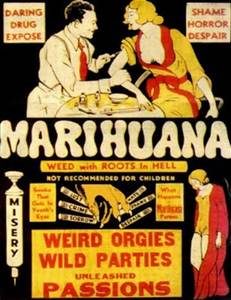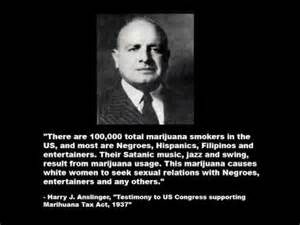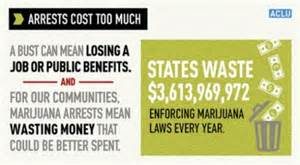Marijuana Remains a Schedule I Narcotic? Malarkey!
The War on Drugs’ Number One Casualty
After much anticipation (and with more and more states openly flouting federal law), the Drug Enforcement Administration (DEA) of the US Justice Department in mid-August refused to remove marijuana from its harshest legal classification under the 1970 Controlled Substance Act.
Schedule I drugs are judged to have a high potential for abuse and have no medical value. This handy chart shows that weed is deemed more dangerous than cocaine and meth:
In the Name of Science
The DEA’s declaration includes phrases such as “the drug’s chemistry is not well-known,” “there are no adequate safety studies,” “the drug is not accepted by qualified experts” and “scientific evidence is not widely available.” The agency concludes that “the known risks of marijuana use have not shown to be outweighed by specific benefits in well-controlled clinical trials…”
This thinking creates a bit of a Catch-22: To change marijuana’s schedule, there needs to be a certain amount of scientific research…but government restrictions make it difficult to fund and conduct that research. In other words,
One reason there isn’t enough scientific evidence to change marijuana’s Schedule I status might be, in fact, the drug’s Schedule I status.
Pot’s Long, Tortuous History
Rather than thoughtful approaches based on individual health and public safety (in other words, ironically, science), the prohibition of marijuana was nothing more than a tool to demonize immigrants and minority groups. It perhaps started after the Mexican Revolution (1910-20), when Mexican immigrants brought to America their language, culture and certain customs, like smoking “marihuana.” Cracking down on pot was a way to keep this immigrant population under the federal thumb.
Harry J. Anslinger
When Harry Anslinger was appointed chief of the Bureau of Narcotics by President Herbert Hoover in 1930, he was known as a bit of a loose cannon. He was a hardliner on Prohibition, and even suggested that buyers of illicit alcohol be subject to the same legal sanctions as bootleggers.
During the Depression, Congress pinched its penny with many federal agencies, and the Bureau of Narcotics was no exception. A great believer in the bully pulpit, Anslinger became convinced that frightening the public about marijuana would bring in the enforcement dollars.
After 1930, newsstands began screaming titles such as “Youth Gone Loco” (Christian Century), “Marihuana: Assassin of Youth” (American Magazine), “Uncle Sam Fights a New Drug Menace–Marihuana” (Popular Science), “The Menace of Marihuana” (American Mercury) and “Sex Crazing Drug Menace” (Physical Culture).
Anslinger eventually got his way: the 1937 Harrison Act (later declared unconstitutional) made pot illegal.
Here’s another Anslinger nugget:
Most marijuana smokers are Negroes, Hispanics, jazz musicians and entertainers. It is a drug that causes insanity, criminality and death–the most violence-causing drug in the history of mankind.
The Injustice of Marijuana Arrests
Despite all that we’ve learned and long felt, and despite its legalization by many states, the fact of the matter is: Marijuana arrests are the engine that still drives the failed War on Drugs. According to the Drug Policy Alliance, “In 2014 there were 700,993 marijuana arrests in the US…the vast majority (88 percent) for simple possession, not sale or manufacture. There are more arrests for marijuana possession every year than for all violent crimes combined.”
The War on Drugs is especially harsh on minority communities. According to the American Civil Liberties Union, “Black people are 3.7 times more likely to be arrested for marijuana possession than white people despite comparable usage.”
An Opinion page of the New York Times perhaps said it best:
America’s four-decade war on drugs is responsible for many casualties, but the criminalization of marijuana has been perhaps the most destructive part of the war. The toll can be measured in dollars–billions of which are thrown away each year in the aggressive enforcement of pointless wars. It can be measured in years–whether wasted behind bars or stolen from a child who grows up fatherless. And it can be measured in lives–those damaged if not destroyed by the shocking harsh consequences that can follow even the most minor offenses.





















































































































